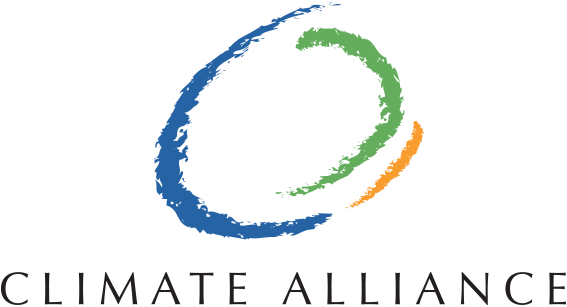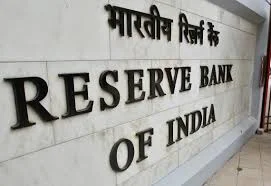The Reserve Bank of India (RBI) has recently tightened loan availability (Read more); forcing the Indian banking sector to recognise and provide for loans from corporates in financial distress, rather than the historical approach of kicking the can down the road, effectively ignoring the issue. This was clearly evident in ICICI Bank (the second largest bank in India) reporting a 1Q2016 result of Rs7Bn, down 76% year on year and only a fraction of the market expectations for a profit of Rs31bn.
The implications for Adani Enterprises Ltd and Adani Power Ltd are significant. Both companies are having trouble servicing their interest costs and loans and an increasing portion of the Adani Group is under financial stress. Historically the RBI has not had a mandate sufficient to allow it to start to rectify this issue, one that is in our view crippling the financial sector, primarily due to the massive financial distress evident across the Indian power sector.
In IEEFA’s view, this banking sector reform is a major positive for the ongoing development of the Indian economy, but by definition it will restrict firms with excessive leverage (by Western lending standards) from continuing on dangerous acquisition binges and excessive greenfield developments.
Financial close at Adani’s Carmichael coal mine proposal continues to get more remote by the month. It is telling that even Adani Enterprises is now accepting Indian Energy Minister Piyush Goyal’s target for India to cease thermal coal imports within 2-3 years has gained acceptance (Reference # 1) . Adani Enterprises recently revised its forecast to now reflect a 7% annual, cumulative decline in Indian coal imports through to 2021/22 to 114Mt, down from a peak of 177Mt in 2014/15. (Reference # 2) This is premised on Adani’s assumption total domestic Indian coal production will show a CAGR of 10.3% through to F2021, including 18-20% CAGR in captive coal mines. (Reference # 3)
Meanwhile, the latest Adani Group news in April 2016 is the ongoing press reports suggesting Adani is looking to invest potentially US$1bn to acquire SunEdison India’s 1.7GW of solar project development pipeline. SunEdison is currently the top solar firm in India, but with the US parent now in Chapter 11 administration, a sale of the Indian business is in IEEFA’s view a very likely and positive outcome. Given the significant upfront capital investment required, large scale solar development is impossible without a financially strong parent. This potential acquisition would be a landmark transaction, aligning the buyer and endorsing the Government of India’s aggressive policy drive to make India one of the top solar nations globally in the near term.
Energy Minister Goyal this week again re-iterated his vision and program to roll out 100GW of solar by 2021/22 (Read more) is targeting 10.5GW of new solar installs in 2016/17, building on the excellent momentum of having trebled annual installs to 3.1GW in 2015/16. (Reference # 4) IEEFA would suggest India is well ahead of most financial analyst and the IEA forecasts in this area. IEEFA remains very optimistic that momentum will continue to build rapidly over 2016. India is set to become the third largest installer of solar globally behind only China and America in 2016, being likely to overtake both Japan and the UK this year.
While on the topic of solar installation records, it was reported that China has installed 7.1GW of solar in the first three months of 2016 (Read more), (Reference # 5) such that China’s cumulative installed solar base is now 50GW, up 52% year on year and now well ahead of global #2, that being Germany with 40GW of solar. Having installed a world record 15-18GW of solar in 2015, China is looking sure to exceed this again in 2016. IEEFA forecasts global solar installs in 2016 of 62GW, up 15% year on year from the record 54GW installed in 2015.
It is also very significant news from the financial analyst investor day presentations that First Solar Inc. US has stepped up a US$2bn capital expenditure program to underpin its target for potentially 12% annual reductions in total installed system costs over the balance of this decade. Recent contract awards locking in solar tariffs in America (US$40/MWh) and Peru (US$48/MWh) (Reference # 6) highlight that solar is increasingly competitive with new fossil fuel electricity generation (Read more). In India, Goyal confirms IEEFA’s estimates that new solar at US$64/MWh is already below the cost of new imported coal fired power generation.
Capital flight from coal sector investments continues, whilst the investment in global renewable energy and energy efficiency continues to gain momentum, backed by the greater regulatory / policy clarity evident with the signing of the COP21 Paris Climate Agreement. (Reference # 7)
References
- http://www.bloomberg.com/news/articles/2016-04-25/india-s-energy-minister-wants-to-cut-coal-imports-to-nothing
- http://www.thecoalhub.com/reports-presentations/coal--global-indian-scenario.html
- http://www.vccircle.com/news/power/2016/02/15/current-downturn-resources-steepest-i-have-witnessed-vinay-prakash-goel
- http://www.thehindubusinessline.com/economy/macro-economy/clean-energy-sector-achieves-recordcapacity-addition-of-6937-mw-in-fy16/article8490545.ece
- http://www.chinadaily.com.cn/bizchina/2016-04/23/content_24780071.htm?platform=hootsuite
- http://cleantechnica.com/2016/02/25/tremendously-low-4-8¢kwh-solar-price-in-peru-unsubsidized/
- http://ieefa.org/signs-capital-flight-acceleration-fossil-fuels-regulatory-pressure-builds/

